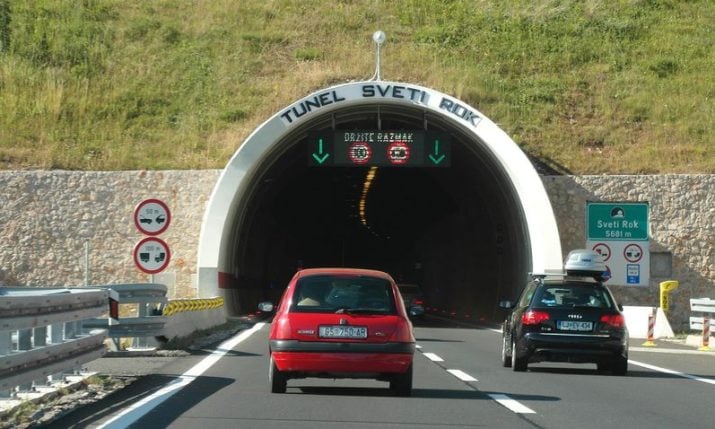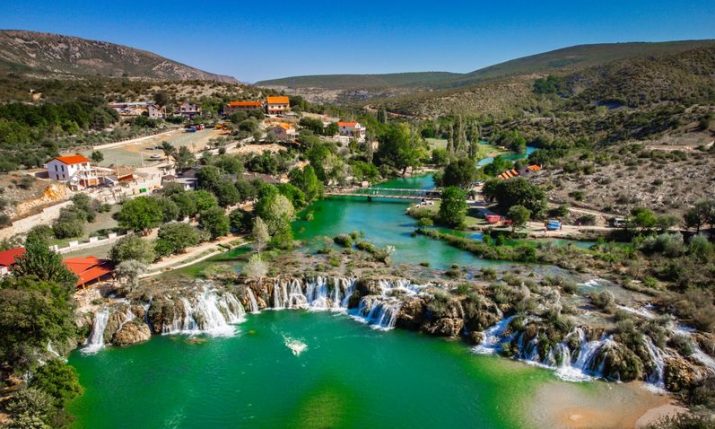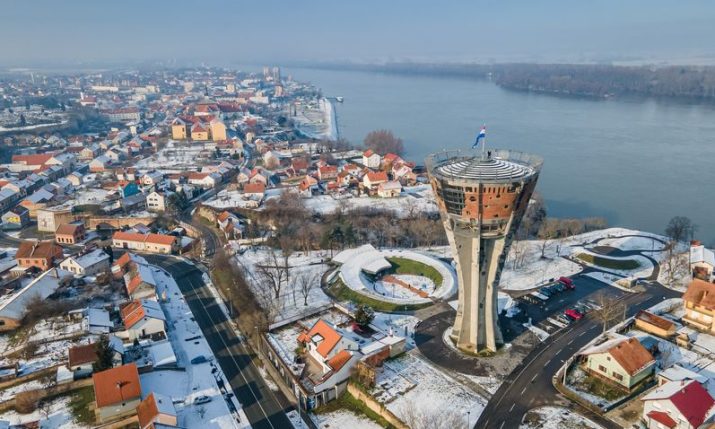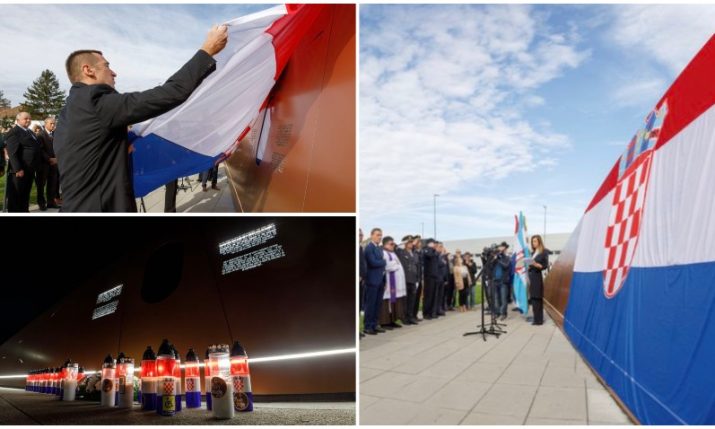Monument to Croatian Cyrillic in Široki Brijeg?
- by croatiaweek
- in Latest

by: SEE
Better believe it…thanks to the initiative of a writer and history buff Grgo Mikulić, who is also the director of the Široki Brijeg Tourism Board, a Cyrillic monument has been erected – much to the astonishment of his townsfolk. True, the initial shock may have subsided, but…
Again, at a time when it seems that one may find opposition to the Cyrillic script at practically every Croatian street corner (certainly everyone has an opinion about it), and when anti-Cyrillic sentiments are the very basis of every ‘die-hard’ Croat’s motto, news of a monument in Cyrillic, or Croatian Cyrillic to be more precise, comes as bit of a shock. What comes as even more of a shock, to put it mildly, is the location at which the said monument has been erected.
The location we are talking about is Široki Brijeg. Before we proceed, however, allow us a brief digression, for we must familiarise the reader who is not acquainted with the issue at hand with the background of the town in question.
Široki Brijeg is a small town in western Herzegovina, which it has, in many ways, come to represent as its spiritual capital. The population is close to one hundred percent Croat, and Široki is the hometown of a whole score of famous – or infamous, depending on your perspective – figures that took part in the last two wars. To call the people of Široki Brijeg ‘die-hard’ Croats is perhaps even an understatement, as hardly any of them would find themselves even slightly offended by that kind of categorisation. After wwii, for instance, such was the (radical and oftentimes even clerical) spirit of the townsfolk that the communist authorities decided to change its name to Lištica, in an obvious attempt to mitigate anti-Yugoslav connotations.
And so it is that news of a monument to Cyrillic in Široki Brijeg, or the adjacent village of Kočerin to be more precise, sounds, well…a bit absurd. Still, this is not a hoax.
The idea of constructing such a monument is credited to one Grgo Mikulić, writer, sculptor, economist and director of the Široki Brijeg Tourism Board. As Mikulić explains, it was his idea to pay homage to the quaintly forgotten fact that the Cyrillic script was used by Croats throughout the middle ages, serving as a bridge of sorts between the Glagolitic script, which was used in the days of the First Kingdom, and the subsequent switch to the Latin. As the artist puts it, “because the Serbian variant of the Cyrillic script had preferential treatment in the educational systems both of the Kingdom and of communist Yugoslavia, we, the Croats, decided to shun it completely in the 1990s, and by doing so have perhaps unwittingly erased an important part of our cultural heritage’.

Wishing to remedy that, and to redirect the public’s attention to the tradition of Croatian Cyrillic, Mikulić has taken upon himself to build a monument in the form of twelve 1.4 metre high Cyrillic letters. These, carved in stone, have been mounted on two locations, one of which is in front of the Kočerin elementary school. What makes Mikulić exceptionally proud is the fact that school children, when asked what the letters represent now, say ‘Croatian Cyrillic’, which best illustrates the success of his idea.
However, initial responses were not as favourable. When the monument was initially erected it took only until the following morning for one of the letters to be topped over. Mikulić explains: “Initially there was shock and disbelief; however, once we explained to the people that this is a type of ancient Croatian script, in which the Kočerin Tablet dating back to 1404 is inscribed – an artefact which is deposited in the Kočerin parish church – they relented. In fact, another one of the oldest Croatian written documents, the 1440 Poljica Statute, is also written in Croatian Cyrillic, and so the idea began to sit well with everyone’.
Apart from the twelve letters already carved, Mikulić plans to ‘do’ the remaining fifteen letters of the Croatian Cyrillic alphabet and place them on three different locations, visible from the roads connecting Split and Mostar and Mostar with Tomislavgrad and Livno respectively, which are to be illuminated and serve their purpose as landmarks of Kočerin and Široki Brijeg.
The project of the Croatian Cyrillic monument is headed by the Stećak Association, which has already received funding both from the governments of Croatia and the Federation of BiH as well as from the Western Herzegovina County. Grgo Mikulić further states that the ultimate goal of his initiative is to have the Croatian Cyrillic Script included on unesco’s list of intangible cultural heritage, and he is in that sense proud of the fact that his undertaking pre-dates that of the hazu (Croatian Academy of Sciences and Arts) Croatian Cyrillic Heritage symposium, held just last year.
Our comment? We should very much like to see Mr Mikulić visit Vukovar…









